Eduardo Briceño on The Performance Paradox and Learning Zones
Key Points
-
We need to stop thinking about school as a performance zone.
-
It is important to feel like you are a part of a learning community.
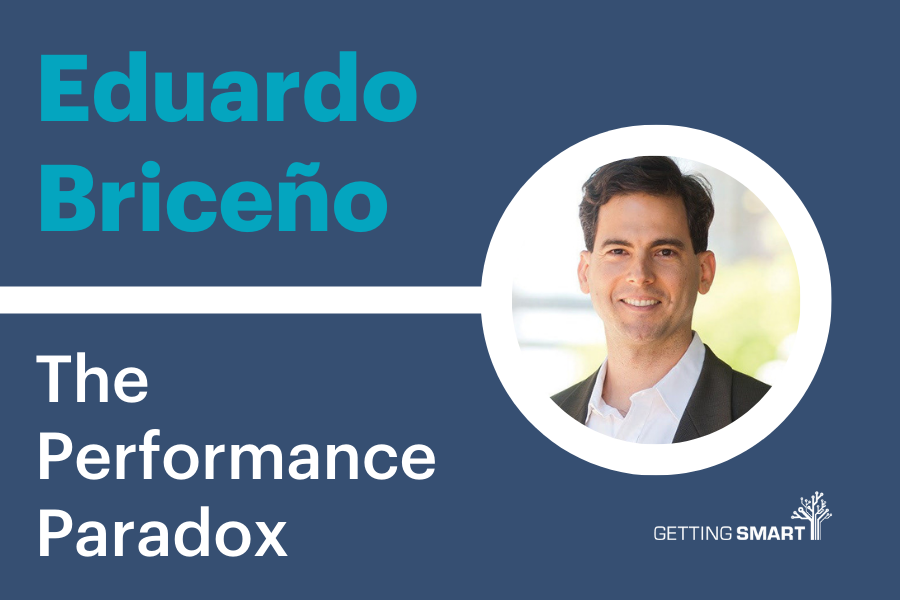
On this episode of the Getting Smart Podcast, Shawnee Caruthers is joined by Eduardo Briceño, speaker, author and facilitator. His new book, The Performance Paradox: Turning the Power of Mindset into Action, was selected as a “Must-Read” by the Next Big Idea Club, which is curated by Susan Cain, Malcolm Gladwell, Adam Grant, and Dan Pink. This conversation unpacks what happens when we stay in cycles of performance rather than growth and learning.
Transcript
Shawnee Caruthers: You’re listening to the Getting Smart Podcast. I’m Shawnee Caruthers. Growing up, my son was on a competitive travel soccer team. Most weekends, we were on the road. He was constantly in game-time situations and spent very little time learning new skills or practicing current ones. I’ve noticed that in classrooms and the workplace, we sometimes forget the value of noticing and reflecting because we stay in cycles of performance. The “performance paradox” reminds us that being in a constant state of performance doesn’t allow for growth; in fact, it achieves the opposite. As learners across the country search for meaning, explore curiosities, and build confidence through valuable learning experiences, this conversation will help frame why learning is as important as performing. To help unpack this further, I’m joined by Eduardo Briceno, speaker, author, and facilitator. His new book, The Performance Paradox: Turning the Power of Mindset into Action, was selected as a must-read by the Next Big Idea Club, curated by Susan Cain, Malcolm Gladwell, Adam Grant, and Dan Pink. Welcome, Eduardo.
Eduardo Briceno: Thank you, Shawnee. Great to be here.
Shawnee Caruthers: So happy to have you here. I was sharing with you earlier that I’ve learned a lot from reading The Performance Paradox, so I’m really excited to have this conversation. Can we start with a basic question: what is the performance paradox?
Eduardo Briceno: The performance paradox is the counterintuitive phenomenon where, if we focus solely on performing, our performance suffers. If we’re fixated on results all the time, our results actually go down. This is the paradox—initially, focusing on performance maximizes results, like in a soccer game where your son is in a performance zone. But if we’re always in performance mode, we stagnate and don’t improve over time.
When I was growing up, playing soccer, or even practicing guitar, I approached practices like performances. I would just play songs on the guitar or go through the motions in soccer practice. I thought just spending time doing those things was enough. But if we look at great athletes, they don’t spend all their time performing. When they struggle with a particular move during a match, they avoid it then and go back to work on it in practice. In practice, they focus on improvement with their coach, which is a very different approach. So, when we’re stuck in chronic performance, whether at work or in life, we stay at the same level and miss out on the potential for better outcomes.
Shawnee Caruthers: You mention that these high performers, when they’re not in chronic performance, shift into what you call the “learning zone.” You gave examples in your book of people like Jay-Z and Beyoncé and the processes they follow. What differentiates the learning zone from the performance zone, and how does each impact skill improvement?
Eduardo Briceno: Right, if chronic performance hurts our results, the solution is to integrate the learning zone into our lives. The performance zone is when we focus on doing things as well as we know how, minimizing mistakes. The learning zone, on the other hand, is when we take risks, try new things, ask for feedback, examine mistakes, and ask questions. It’s a space to explore, not to focus on perfection.
The learning zone will look different depending on the person or the context. It’s about finding strategies that work for specific skills and situations. The key is to be clear about when and how we want to perform and when we want to learn. Often, the best opportunity for learning is in how we approach the work we’re already doing, making sure we’re getting better as we go rather than just getting things done.
Shawnee Caruthers: Eduardo, what about those situations where we feel like we don’t have the time? I’m thinking of your yogurt example in the book, where they scaled too quickly without enough time in the learning zone. How can we make time to really sit in that learning zone?
Eduardo Briceno: That example was General Mills and their yogurt product. They had a new idea for yogurt and wanted to test it in the market. They found that producing a small test batch cost about the same as producing a large batch, so they decided to go big and tested it in 20% of the U.S. They thought this would give them an advantage if it worked, but when it didn’t work as expected, they were spread too thin to make adjustments efficiently. Retailers lost faith, and they had to discontinue the product.
For most of us, the challenge is about time. We’re busy, and making time to learn can feel impossible. However, the biggest opportunity lies in shifting how we work. For example, a study showed that people with a growth mindset—those who believe they can improve—pay more attention to their mistakes and actively learn from them. They don’t need extra time; they just shift their focus to what they can learn rather than only what they’re doing well. This mindset shift can create learning opportunities in the middle of our daily routines without needing additional time.
If you’re aiming to become a top athlete or artist, deliberate practice is essential, and it does require dedicated time. But for most of us in knowledge work, it’s more about how we work rather than setting aside blocks of time. For instance, listening to a podcast like Getting Smart while doing something else is a way to stay in the learning zone without adding time.
Shawnee Caruthers: You also discuss “deliberate” versus “purposeful” practice in your book, with “deliberate” involving an expert guiding you, while “purposeful” is more self-directed. How can educators incorporate both types of practice in the classroom?
Eduardo Briceno: Great question. Many students, myself included, perceive school as a place to perform rather than a place to learn. Often, everything they do is graded, so they think the goal is to get everything right, to always score 100%. This communicates that making mistakes isn’t valued, even though mistakes are essential for learning.
To encourage learning, educators can give feedback on the work itself rather than assigning grades all the time. Feedback could come from teachers, peers, or through self-reflection. If students make a mistake in math, for example, it’s not just about solving the problem correctly but understanding where they went wrong and discussing it. Instead of always moving to the next problem, we can spend time learning from mistakes.
Shawnee Caruthers: This approach sounds similar to what you call “learning while doing.”
Eduardo Briceno: Yes, learning while doing can be about improving through real-time feedback or dedicating time specifically to the learning zone. Schools shouldn’t primarily be performance zones. Instead, they should focus on growth and exploration.
Shawnee Caruthers: I know you’ve been heavily influenced by Carol Dweck and the growth mindset framework. Can you elaborate on the role of growth mindset in fostering effective strategies and habits for growth?
Eduardo Briceno: Absolutely. When I applied to graduate school, I initially didn’t get in, but later, when I was accepted, Carol Dweck had joined Stanford, and she became a wonderful mentor. A growth mindset is the belief that we can change and improve. It’s a perspective on human potential, not about working harder or being open-minded, but understanding that abilities are malleable. However, it’s not enough to believe in growth; we also need effective strategies, which is where the learning zone comes in.
For motivated and effective learning, we need four elements: a growth mindset, an understanding of how to change (the learning zone), a purpose for improvement, and a sense of belonging in a learning community.
Shawnee Caruthers: How can teachers create that learning community in their classrooms to help students see the value in being part of it?
Eduardo Briceno: Children are naturally curious and effective learners before they even enter school, always asking questions and experimenting. But research shows that as they go through school, their curiosity tends to decline. Part of this comes from structures that unintentionally make learning feel irrelevant or boring. If we focus on making learning engaging and relevant, showing students the joy of discovery and collaboration, they’ll see the value in being part of a learning community.
Shawnee Caruthers: Whether it’s at the leadership level or in the classroom, there can be a commitment to learning that starts small and grows. You outline five steps in your book for committing to learning. Could you share those?
Eduardo Briceno: I don’t think there’s a universal algorithm since every situation is unique, but it’s important to start by clarifying what you value and the competencies you want to foster. Discussing and aligning on these goals as a team is essential. Next, build a learning community within your staff, where teachers and leaders share ideas, feedback, and results, continuously learning together.
Shawnee Caruthers: How can they then amplify what they’re doing so that it doesn’t stay confined but rather impacts systemic change?
Eduardo Briceno: There are so many great classrooms and schools out there doing amazing work, and part of what you do at Getting Smart is amplifying those stories. It’s about doing what’s best for the students in your immediate care while sharing successes to inspire and inform a broader audience.
Shawnee Caruthers: Finally, for those who encounter resistance, what strategies can they use to promote a culture of learning?
Eduardo Briceno: Sure. When people are trying to foster a learning culture and encounter resistance, one approach is to start small. Share resources, such as an 11-minute TED Talk on the learning zone and performance zone that I gave, which some teams have found useful. Watching it together or asynchronously and then discussing it can help everyone understand the concept and start thinking about how it applies to them.
If you encounter resistance, focus first on those who are interested and ready to engage. Work with them to show what’s possible. Often, once others see the positive results and the genuine commitment to improvement, they may start coming around. It’s essential to demonstrate that you’re supportive of learning from mistakes and valuing progress, not just flawless results.
For instance, leaders might encourage risk-taking and learning, but then only celebrate successes. This can create cognitive dissonance. Instead, it’s better to celebrate smart risk-taking and the lessons learned from mistakes, not just the achievements. Over time, if you build systems and habits that reinforce continuous improvement, the culture of learning will grow.
Shawnee Caruthers: Thank you, Eduardo. What I appreciate about your book, The Performance Paradox, is that it’s not only for individuals in the workplace; it can also apply to classrooms, as you’ve demonstrated. Thank you for helping us understand the difference between the learning zone and performance zone, why we need both, and how to implement effective strategies to make a meaningful impact. It’s been a pleasure having you on the podcast.
Eduardo Briceno: Thank you, Shawnee, for having me. One last note—sometimes in the growth mindset world, people start viewing performance as something negative, as if we should always be learning and never performing. But performance is essential; it’s how we contribute and get things done. The learning zone enables us to perform better, but it also makes the journey more enjoyable and fulfilling. Engaging in both zones—learning and performing—creates a more enriched experience, both in school and in life.
Shawnee Caruthers: Absolutely, we need both. Thank you again, Eduardo.
Eduardo Briceno: Thank you!
Links:
- Eduardo Briceño
- The Performance Paradox
- Website
- How to Get Better at the Things you Care About (TED)
Articles by Eduardo:
- Growth Mindset Parenting (gettingsmart.com)
- Learning and performance: how to help students get in the zone | Teacher Network | The Guardian
- Growth Mindset: Clearing up Some Common Confusions | KQED
- Response: ‘Growth Mindset Starts With Us, Not With Them’ (Opinion) (edweek.org)
- Growth Mindset and Testing: What We Can Learn From The Hunger Games | EDU (scholastic.com)
- Mindsets and Student Agency – Aurora Institute (aurora-institute.org)
- Mistakes Are Not All Created Equal – Growth Mindset Blog & Newsletter (mindsetworks.com)
- Math Horizon’s Aftermath: Embrace Mistakes (horizonsaftermath.blogspot.com)
- Effort, Grit or Insanity? – Growth Mindset Blog & Newsletter (mindsetworks.com)
- Eduardo Briceño: How to get better at the things you care about | TED Talk
- Growth mindset for a more empathetic and collaborative world – Growth Mindset Blog & Newsletter (mindsetworks.com)


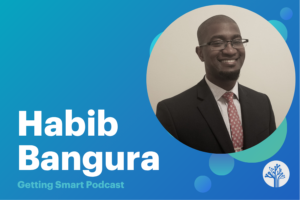
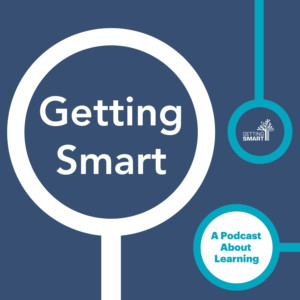
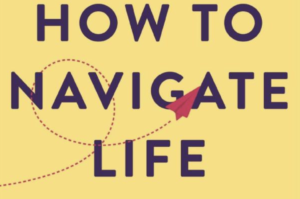
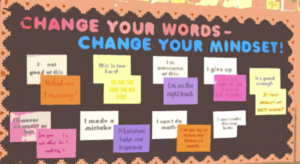
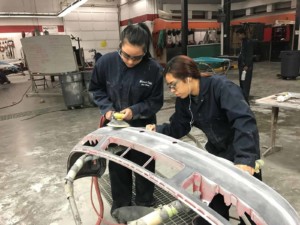
0 Comments
Leave a Comment
Your email address will not be published. All fields are required.